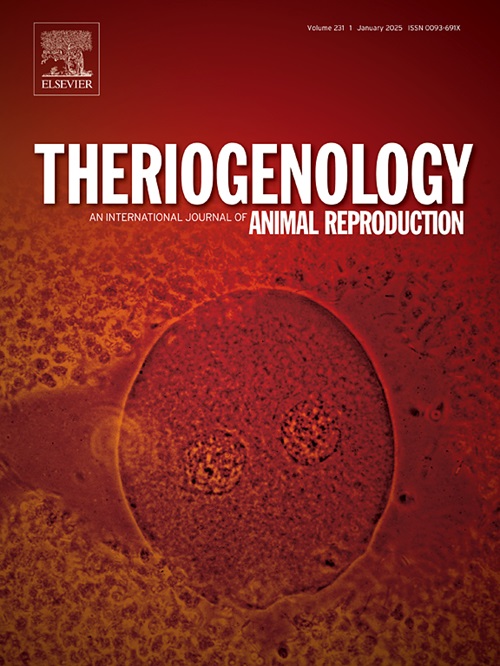聚苯乙烯纳米颗粒对牛卵母细胞体外成熟的影响
IF 2.4
2区 农林科学
Q3 REPRODUCTIVE BIOLOGY
引用次数: 0
摘要
聚苯乙烯纳米颗粒(PS-NPs)由于其广泛存在和潜在的毒性已经成为一个重要的环境问题。本研究探讨了PS-NPs对牛卵母细胞体外成熟(IVM)的影响,以评估其对生殖健康的影响。在IVM期间,卵母细胞暴露于不同浓度的100 nm PS-NPs(0、5、50、100和200 μg/mL)或荧光30 nm PS-NPs(0、5、35和70 μg/mL)。较高的PS-NPs浓度(100 nm的PS-NPs为100和200 μg/mL, 30 nm的PS-NPs为70 μg/mL)显著降低核成熟率,增加变性。同样,较高浓度对细胞质成熟产生负面影响(P <;0.05)。PS-NPs暴露还会提高卵母细胞内活性氧(ROS)水平和谷胱甘肽(GSH)含量。值得注意的是,卵母细胞和积云细胞都以浓度依赖的方式内化了PS-NPs。这些发现证实了PS-NPs的生殖毒性,强调了它们可能损害哺乳动物的生育能力,并引起了人们对其环境和健康影响的关注。本文章由计算机程序翻译,如有差异,请以英文原文为准。
Effects of polystyrene nanoparticles on bovine oocyte in vitro maturation
Polystyrene nanoparticles (PS-NPs) have emerged as a significant environmental concern due to their widespread presence and potential toxicity. This study investigates the effects of PS-NPs on bovine oocyte in vitro maturation (IVM) to assess their impact on reproductive health. During IVM, oocytes were exposed to varying concentrations of 100 nm PS-NPs (0, 5, 50, 100, and 200 μg/mL) or of fluorescent 30 nm PS-NPs (0, 5, 35, and 70 μg/mL). Higher PS-NPs concentrations (100 and 200 μg/mL for 100 nm PS-NPs and 70 μg/mL for 30 nm PS-NPs) significantly reduced nuclear maturation rates and increased degeneration. Similarly, cytoplasmic maturation was negatively affected at higher concentrations (P < 0.05). PS-NPs exposure also elevated reactive oxygen species (ROS) levels and reduced glutathione (GSH) content within the oocyte. Notably, PS-NPs were internalized by both oocytes and cumulus cells in a concentration-dependent manner. These findings confirm the reproductive toxicity of PS-NPs, emphasizing their potential to compromise mammalian fertility and raising concerns regarding their environmental and health implications.
求助全文
通过发布文献求助,成功后即可免费获取论文全文。
去求助
来源期刊

Theriogenology
农林科学-生殖生物学
CiteScore
5.50
自引率
14.30%
发文量
387
审稿时长
72 days
期刊介绍:
Theriogenology provides an international forum for researchers, clinicians, and industry professionals in animal reproductive biology. This acclaimed journal publishes articles on a wide range of topics in reproductive and developmental biology, of domestic mammal, avian, and aquatic species as well as wild species which are the object of veterinary care in research or conservation programs.
 求助内容:
求助内容: 应助结果提醒方式:
应助结果提醒方式:


